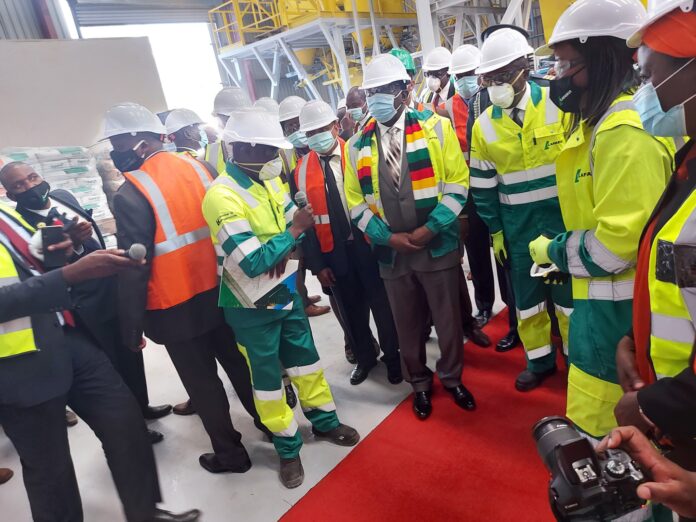Davison Kaiyo
HARARE – Cement manufacturers are seeking government intervention in reducing key cost-drivers that are making its products uncompetitive compared to its regional peers.
This came out at the commissioning of Lafarge Cement’s new US$2.8m dry mortar plant with the company’s CE Precious Nyika saying power alone constitutes 30% of the cost of production.
“Cement production is one of the most energy intensive processes consuming an average of 4 to 5 Gigajoules per ton of cement, which represents 20 to 30% of total production costs.
“Just to give a comparison, the coal price ex- factory is about US$42 per tonne in Zimbabwe, compared to USD30 per tonne in South Africa and Botswana,” she said.
Nyika also said transport is also another cost driver that is threatening their competitiveness saying “road transportation in Zimbabwe delivers cement at 11US cents/km/tonne vs 7 US cents/km/tonne for South Africa.
“Regional players have benefited from the use of railway systems. As an industry we envisage we will be able to do the same more frequently. Today, rail cost in Zimbabwe is 7.00 US cents / km / tonne vs 1.79 US cents/ km/ tonne for South Africa and 3.92 US cents/km/tonne for Zambia.”
However, industry also welcomed some milestones that had been recently achieved such as the promulgation of SI 89 of 2021, power stability and the auction system. “As we celebrate these milestones we take this opportunity to express our appreciation as industry of the power stability that we have seen in the country throughout 2020 and into 2021.
At the time of promulgation of the SI, imported cement was costing between USD4-USD5 while the locally produced was costing upwards of USD8,00 per bag.
The construction sector is also set to benefit from the government infrastructural investments with Finance Minister Mthuli Ncube said government’s infrastructure plan will rely “more and more on building capacities of our local companies and use of local resources.”
Lafarge says it expects to bring its 3D printing technology in the third quarter of this year. Using 3D printers, one can produce concrete structures quickly and cost-effectively without formwork – with great freedom of design.
















